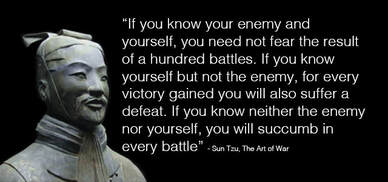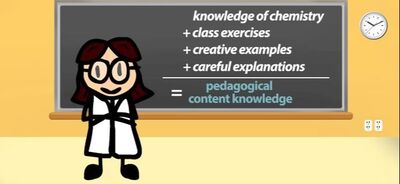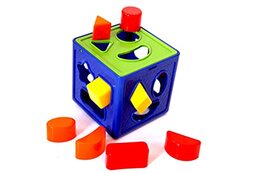6 Steps to Tackle ‘O’ Level Pure Chemistry Paper 2One of my students pointed out that I didn't update my blog for the entire 2022! It had been a really busy 2022. The days passed too fast and I didn't have time to share my thoughts in this blog. It has always been my passion to share study tips, and useful advice with my students. It's so much more convenient to just share my thoughts through Whatsapp with my current students. To make up for my 'absence', I shall share 6 steps to tackle the Structured Questions in Paper 2. This is also relevant for students taking Combine Chemistry as the skills required are similar. Step 1: Know your 'enemy' well.Paper 2 of the ‘O’ Level Chemistry Paper carries 80 marks and accounts for 50% of the overall ‘O’ Level Chemistry grade. Since the demands of Paper 2 are high and the given duration for you to complete the paper is relatively short, you have to strategise in order to manage this paper. Time: 1hr 45min Section A: Consists of 7 to 9 compulsory structured questions, each with several parts Section B: Consists of 3 questions
Do note that for students taking the O level exams in 2024, there will be a slight change in the format. Step 2: Know the Periodic Table better than your best friend.The Periodic Table has a wealth of information that can help you solve questions. Some information such as proton number, mass number, group number and period number can be obtained directly from the Periodic Table. Tip: For all my students, they will get a personalised Periodic Table from the 1st session. Step 3: Understand the links between all topicsPaper 2 questions require you to use knowledge from more than one specific topic. Hence, you should be able to link several concepts across different topics to answer questions. A good way to prepare for such questions would be to have strong content knowledge in foundational topics. Key foundational topics to master by Sec 3 are:
Normally, teachers like to set exam questions with a mix of topics. For example:
Step 4: Study Smart. Know your content well.The time crunch in an exam situation means that the more quickly you can recall knowledge, the better you can focus on applying their knowledge to application questions. These basic concepts can help you deduce or predict other scientific information that you will need to solve questions. One way to do so is to commit certain basic scientific information to memory. *Read on to get some tips on how to do it* Step 5: Learn to look for clues like Sherlock HolmesIdentify the Directive Word Questions which begin with the words, “define”, “state”, “describe”, “explain” or “outline” will test factual knowledge and understanding. Such questions will require you to recall and explain specific concepts. Questions which ask you to “describe” will require them to use results or observations from the question in their answers. On the other hand, questions which ask you to “explain” will require them to use scientific concepts to back up the observations you pen in their answers. Identify the Tested Topic(s) You should identify the topic(s) and/or concept(s) tested in a question by looking out for key words. For example, such key words or phrases may include “rate of reaction” or “displacement reaction”. You should include related key words/ phrases in their answers. Detect Extended Questions In the case of questions which are split into parts, you must ensure that your answers for subsequent parts are consistent with earlier parts. Some key words/phrases you may look out for to identify such questions are “Use your answer from ...” or “Based on your observations from ...” Step 6: Answer with precisionQuestions which involve a novel set-up or application will require you to apply what you have learnt. Additional information may be provided by the question if advanced concepts are being introduced. Such questions tend to be longer because a lot of information and/or data is provided. Questions may begin with the following words: “predict”, “suggest”, “calculate” or “determine”. Such higher-order questions require you to study the given trends and to predict any changes based on the variable changed. For questions which ask you to “suggest” an outcome, you can give a relevant or plausible answer so long as the suggestion is based on facts. You should provide a full answer complete with elaboration. You may choose to craft you answer in a chronological manner (step-by-step) or to use the “cause and effect” format which lists a cause and explains the resulting effect. In order to ensure that your answer is relevant and accurate, you are encouraged to use named examples within your answer. Bonus Tip 1: Mrs Lim's 3C MethodWhen structuring answers for Paper 2, use the ‘3 Cs’ Method. It is a systematic approach that helps you to provide accurate and precise answers. All my students are trained to use this method. CLAIM: Directly answer the main question. CLUE: Quote the given information from the question (which could include numerical values, graphs, tables, diagrams, etc.). CONCEPT: State the appropriate concepts used to explain the contextual clues given in the question. Bonus Tip 2: Memory TechniquesOver the years of teaching, I realise that one of the common challenges that students have is that they find it hard to commit what they have studied into their long-term memory. And this affects their performance during the exam. So, I'd like to share a few simple techniques that you can adopt, to help you improve your memory work. Avoid Cramming Studying materials over a number of sessions gives the you the time to adequately process information. Students who study regularly remember the material far better than those who do all of their studying in one marathon session. You will realise that during our tuition session, I will always try to focus on certain main concepts and not cram a whole chapter. Organisation Information is organized in our memory in related clusters. Try grouping similar concepts and terms together, or make an outline of your school or tuition notes to help group related concepts using tables, listing method etc. Use highlighters or pens in different colors to group related ideas in written study materials. During tuition, you will realise that I will always try to summarise what we’ve learnt in our precious notebook. Utilize Mnemonic Mnemonic is a technique often used by students to aid in recall. For example, students can associate a term they need to remember with a common item that you are very familiar with. The best mnemonics are those that utilize positive imagery, humor, or novelty. Create rhymes, songs, or jokes to help remember a specific segment of information. I always try to tell stories, “jokes” to help you remember certain concepts. Remember my blast furnace story? What about piper piper in fuels? And what did zebra say to goat? (Only my students will understand these questions!) Hope you find these useful! Have a wonderful 2023!
Comments are closed.
|
Mrs Lim
A Chem-Addict passionate about teaching and learning Chemistry. Archives
February 2023
Categories |
- Home
- More Information
- Contact Me
- Blog
-
FREE 5-MIN Notes
- 1. Experimental Techniques
- 2. Methods of Purification
- 3. Separation Techniques
- 4. Qualitative Analysis
- 5. Kinetic Particle Theory
- 6. Atomic Structure
- 7. Elements, Compounds, Mixtures
- 8. Ionic Bonding
- 9. Covalent Bonding
- 10. Mole Concept
- 11. Electrolysis
- 12. Energy Changes
- 13. Speed of Reaction
- 14. Redox
- 15. Acids and Bases
- 16. Salts
- 17. Ammonia
- 18. Periodic Table
- 19. Metals
- 20. Air
- 21. Fuels
- 22. Organic Chemistry
- 23. Macromolecules
- Free Printables







 RSS Feed
RSS Feed
